









Certified Soul Nutrition SPRING 5770 ע"שת חספה גח ה"ב יתלאגו יתחקלו יתלצהו יתאצוהו ëåñ ùì àìéäå
3 4 5 6 10 12 16 17 18 20 22 23
SHARE YOUR SPIRIT
QUESTIONS FOR THE ~
HEALTHY SPIRIT
THIS MATZAH THAT WE EAT
By Rabbi Zushe Yosef Blech
ANDERSON
INTERNATIONAL FOODS, INC. INTERVIEW
With Rabbi Moshe Vogel & Rabbi Leizer Teitelbaum
MAROR
By Rabbi Yitzchak Gornish
LET ALL WHO ARE HUNGRY COME AND EAT
By Aliza Libman
RECIPE
AN OUNCE OF PREVENTION
By Rabbi Don Yoel Levy
WHO’S BEHIND THE ~ INTERVIEW
With Rabbi Aharon Haskel
CHASSIDIC INSIGHTS–DAYENU: IT WOULD HAVE BEEN ENOUGH
Compiled by Dina Fraenkel
SOUL NUTRITION
We welcome your comments, submissions and letters to the editor.
MAIL: 391 Troy Avenue
Brooklyn, NY 11213

E-MAIL: editor@kosherspirit.com
EDITOR-IN-CHIEF:
Rabbi Chaim Fogelman

EDITOR:
Dovi Scheiner
ASSOCIATE EDITOR:
Dina Fraenkel
DESIGN: www.SpotlightDesign.com
Dear Reader, S
uccessful people know that it’s all in the details. Pesach is a time when we all have different detailed minhagim handed down from generation to generation (depending on where your family originated and the leader of your community); it seems that we are all consumed with seemingly small details, making sure things are done just so. As a whole nation, we all celebrate essentially the same way, but the details are what make each of our celebrations different. From the cutting of the wheat for matzah months before Pesach, to eating or not eating gebrokts on the very last day of Yom Tov, we all have our own ways of doing things.
In fact, Judaism and Torah are full of details; every mitzvah must be done in a very specific manner – from what to do when we rise in the morning to how we go to sleep. On Erev Pesach we are permitted to eat Chometz until a precise time, we drink four cups of wine at the Seder, we use three matzos under the Seder plate…
How fitting that this time of year is filled with details, more than the rest of the year. Pesach, the birth of the Jewish nation, is the time that Hashem chose us and made us into a nation, into His nation, no less. As far as success as a nation (successful people know that it’s all in the details), we must be the most fortuitous nation of all times! Where are the mighty Romans and Greeks? From Alexander the Great to Napoleon, all of the so-called “great” nations that tried to destroy us are non-existent today, but the Jews are still here.
In this issue, read about the successes and contributions the Jews in Israel and abroad are making to the world. And don’t forget about the details…learn about the intricate details of Shmurah Matzah production in Rabbi Zushe Yosef Blech’s informative article. You can also read about the many requirements and nuances of observing the mitzvah of maror at the Pesach Sedarim in Rabbi Yitzchak Gornish’s article, “Maror”.
Kashrus is also all about the details. The difference between certifying a product that contains grape, fruit juice, or grapefruit juice is quite substantial! Rabbi Levy will explore the importance of paying close attention and keeping detailed tracking logs and systems of all receivables to an ~ certified facility.
Yet, with all these details we must always stay focused on the big picture – like HaRav Moshe Weber (ob”m) used to say, “To have a mashehu (tiny bit) of chometz in your house on Pesach is only a rabbinic decree, but to be besimcha on YomTov (v’samachtab’chagecha) is m’d’oraisa.” This concept also applies to becoming so aggravated and angered if something isn’t quite the way we want it on Pesach…anger is forbidden in the Torah (even a tiny bit) all year long.
May your preparations for Pesach go well in all the details and best wishes for a chag kosher v’sameach
Rabbi Chaim Fogelman Editor-in-Chief
2• www.OK.org Kosher Spirit - Pesach 5770 3/9/2010 2:33 PM Page 2
Share Your Spirit FEEDBACK

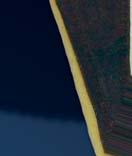






Readers share their thoughts about the last issue
Dear Kosher Spirit, I










made the Zucchini Parmesan Latkes from the Chanukah issue of Kosher Spirit and they were really incredible. I also made a separate batch without flour for my husband who is on a gluten-free diet and they came out delicious, too. Thanks,
C. Lipskier
Remembering
Rabbi Berel Levy

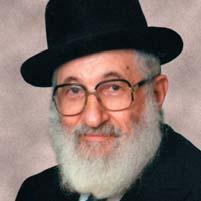

ob”m on his 23rd yarzheit (5 Nissan)
Rabbi Berel Levy, my Zaida. A loving and doting grandfather, one who was fully involved in all aspects of the lives of his grandchildren – particularly with chinuch, where his primary concern was for his family to lead a life of Torah and Yiras Shomayim – al derech Yisroel saba.
We looked up to him with reverence and awe. When he would walk into a room his presence alone would inspire us to act differently.
My family had the zechus and unique opportunity to host our Zaida and Savta every year for Pesach. Watching him lead the PesachSeder at the head of the table, reliving the miracles of Yetzias Mitzrayim, is a memory I will forever cherish. Waking up on a Shabbos or Yom Tov morning to the singsong of Zaida learning Gemara at the dining room table was an example to us of the importance Torah learning should have in our lives.
Zaida’s uncompromising stand on matters pertaining to Yiddishkeit, particularly in the kashrus field, were legendary. His Mesiras Nefesh to bring our brothers and sisters of Klal Yisroel closer to Torah and mitzvos (up to the point of traveling to Russia in the height of the Communist era notwithstanding the dangers involved), are important lessons for us grandchildren to internalize and inspire. Baruch Hashem, we have the zechus to have our Savta (yblc”t) among us who was the helping partner in all of Zaida’s accomplishments. May she be zoche to live to 120 healthy years and experience only nachas from us grandchildren.
 Shlomo Gartenhaus Menahel, YeshivaGedolah Zichron Shmayahu Toronto, Canada
Shlomo Gartenhaus Menahel, YeshivaGedolah Zichron Shmayahu Toronto, Canada
~ Certified Artwork Cookies
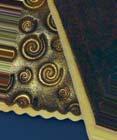






and Cakes, located in Crown Heights, Brooklyn, won first place in this year’s NYC Cake Convention in the Winter Wonderland Wedding Cake category!
Ruth Raymond, owner of Artwork Cookies and Cakes, offers custom designed cakes and cookies for all occasions. (Oops! Sorry, not for Pesach!)
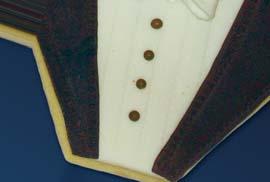


Ruth was also a gold medalist at the American Bakery Expo in 2009 and her work appears this coming month in American Cake Decorating magazine. Cakes, cookies and cupcakes are designed to meet each customer’s preferences.


Ms. Raymond can be reached at 917-602-1368 or artworksweets@ gmail.com
Now THAT’s the Spirit

www.OK.org • 3
e s . fied ies h (hi s
~ Certified David’s Restaurant in NYC offers customers the opportunity to put on tefillin at the restaurant!
Kosher Spirit - Pesach 5770 3/9/2010 2:33 PM Page 3
The ~ receives many letters/emails with kosher questions...





Rabbi Hanokaresponds:
Even products that seem to be innocuous, kashrus-wise, often go through some form of minimal processing that can cause a kashrus concern. Given the extra stringencies common on Pesach, consumers should be aware that peeled vegetables and fruits are often soaked or washed in a water solution that contains a small percentage of preservatives to lengthen the shelf-life of the product itself, as well as to enhance color retention. These preservatives are often derivatives of kitniyos and possibly chometz, as well. Therefore, it is proper to look for a reliable Passover hechsher when considering these types of products to ensure that they are free of the above concerns.


In addition, one should be sure to carefully wash allfreshfruits and vegetables (even if you plan to peel them) on Pesach to ensure that no wax residue, which may contain kitniyos or chometz, remains on the produce.

4• www.OK.org
Dear ~,
Is it permissible to use pre-cut, peeled vegetables or fruits (that do not require Bedikas Tolaim) without a Kosher for Passover hechsher on Pesach?
For a complete listing of all ~ Kosher Certified Pesach products please visit www.OK.org/Pesach Is it Kosher For Pesach? Kosher Spirit - Pesach 5770 3/9/2010 2:33 PM Page 4
esach is a time when Jews are extraordinarily careful to monitor the foods we consume. It is also a time when we consume a huge amount of fruit and vegetables; possibly more in 8 days than many eat in the span of a few months! In earlier days farmers used to use excessive pesticide to help control infestation (it’s no wonder that so many people have a custom to peel all of their fruits and vegetables on Pesach!) and most farmers still use some pesticides, which has prompted buyers to look for organic produce instead. Here is a list of the “Dirty Dozen” (produce with the most pesticide residue, where organic may be preferred) and the “Clean Fifteen” (produce with the least pesticide residue).
Peaches

Apples
Bell Peppers
Celery
Nectarines
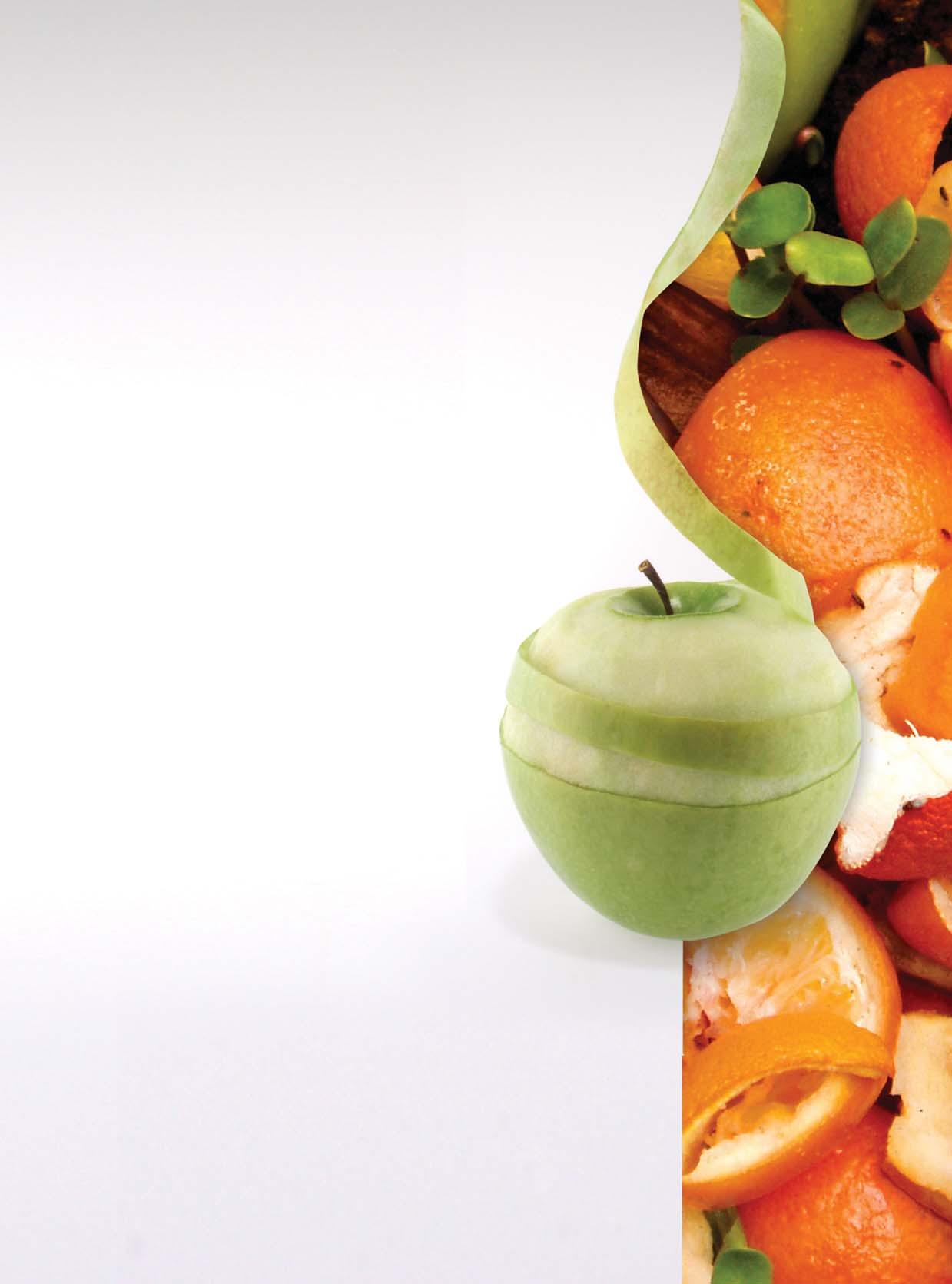
Strawberries
Cherries
Kale
Lettuce
Imported Grapes
Carrots
Pears
Onions
Avocados
Corn
Pineapples
Mangoes
Asparagus
Sweet Peas
Kiwi
Cabbage
Eggplant
Papayas
Watermelons
Broccoli
Tomatoes
Sweet Potatoes
Please note: We must, of course, be careful to inspect our produce for insects. Organic produce has more insects than conventionally grown produce, so one must be extra careful to check organic produce well. (See ~ Vegetable Checking Guide.)
Horseradish
Did you know that horseradish contains glucosinate, which has been shown to increase the liver’s ability to fight carcinogens and suppress the growth of cancerous tumors?! Horseradish also has antibacterial properties and may help treat urinary-tract infections.
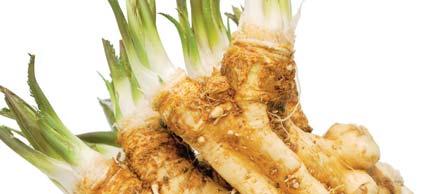
Fifteen www.OK.org • 5 ~~ Kosher Spirit - Pesach 5770 3/9/2010 2:33 PM Page 5
Dirty Dozen Clean
וזילכואהצמ ונאש THIS MATZAH THAT WE EAT
 By Rabbi Zushe Yosef Blech
By Rabbi Zushe Yosef Blech
חספ לש הדגה Haggadah
shel Pesach
6• www.OK.org Kosher Spirit - Pesach 5770 3/9/2010 2:33 PM Page 6
lthough we generally refer to the holiday as “Pesach” (Passover), this name technically refers to the 14th day of Nissan, the day that the Korban Pesach (Paschal Sacrifice) was brought. The seven-day holiday itself is referred to as Chag ha’Matzos the Holiday of Matzos, since the entire seven days are characterized by refraining from chometz and eating matzah. Although the requirement to eat matzah applies only during the Seder, one is prohibited from eating chometz during the entire holiday. In addition, some authorities rule that although one is not obligated to eat matzah during the rest of Pesach, one actually fulfills the mitzvah of matzah every time it is eaten during Pesach.All matzah, however, is not the same, and it is therefore important to know their distinctions in order to be able to approach the fulfillment of the mitzvos of refraining from chometz and consuming matzah in the most appropriate manner. Both chometz and matzah are made from the same ingredients—flour and water—and it is impossible to understand one without the other. Chazal teach us that when any of the five major grains—wheat, rye, oats, barley and spelt—come in contact with water, they may ferment and become chometz. This fermentation may occur spontaneously upon the grain becoming wet for even a brief period, even without the addition of yeasts or other leavening agents. Matzah is defined as bread made from any of these grains—which are susceptible to becoming chometz— but are mixed with water and baked in such a way that guarantees that it does not ferment. The care required to prevent chimutz is called shimur— “guarding”—a concept based on the verse“u’sh’martem es ha’matzos” “And you shall guard the matzos.”
One must therefore be very careful when making matzah, since the difference between chometz and matzah can be very slight, indeed.
WHEN DOES SHIMUR START?
There are three opinions discussed in Halacha as to the level of guarding that is required. The most lenient opinion states that this requirement is satisfied as long as care is exercised from the time the flour is mixed with water to ensure that the matzah is baked before it can become chometz (Shmurah mi’Sh’as Lisha). This approach is based on the assumption that flour is generally stored away from water, and chometz concerns only begin at the point of kneading the dough, where water is added to the flour. This opinion, however, should only be followed in cases of extreme necessity, and none of the matzah sold today follows this approach. [Indeed, most wheat today is soaked (tempered) in water before milling, which raises the concern that it may be true chometz].
The second opinion holds that the grain must be guarded from the time it is milled into flour. This approach is based on the assumption that whole grains are not susceptible to becoming chometz even if they were to become wet, since the hard, unbroken kernels are normally resistant to water. Once milled, however, the grains lose this protected status, especially where flour mills were powered by running water and the flour was thus exposed to moisture. Such flour is called Shmurah mi’Sh’as Techina. The grain is inspected before milling to ensure that it has not begun to sprout or exhibit other signs of chimutz, and by doing so we are assured that even if the whole grain had become wet it had nevertheless not become chometz. Most machinemade matzah uses such flour, and such matzah is commonly referred to as matzah p’shutah—“regular matzah”.
The third approach requires supervision of the grain from the time of its harvesting until the actual baking of


the matzah to ensure that it did not come into any contact with water at any point whatsoever prior to making it into a dough. This approach is concerned that the kernels may have cracked after harvesting and become wet, creating a chometz concern. Indeed, care is taken to harvest the grain beforeit is fully ripe, since fullyripened grain—even if still on the stalk—could potentially become chometz under the right conditions. There is even a discussion in the Poskim about whether a Jew must actually harvestthe grain, and whether one must supervise the transportof the grain to ensure that it does not come in contact with water! Flour that is “guarded” to this extent is known as Shmurah mi’Sh’as K’tzirah, and this is the flour that is used to bake all hand and some machine matzah. Such matzah is referred to as “Shmurah Matzah,” although all other matzah is also, technically, “shmurah” according to many opinions.
HOW DOES ONE EFFECT SHIMUR?
The requirement of “guarding” the matzah can be interpreted in two ways. Some Rishonim explain the concept of shimur as a requirement to be
www.OK.org • 7 Kosher Spirit - Pesach 5770 3/9/2010 2:33 PM Page 7
extra vigilant in preventing chometz.
In other words, even where there may technically be no concern of chometz, the Torah nevertheless requires one to be extraordinarily careful to ensure that no chometz is created. Other Rishonim, however, understand the concept of shimur to be one of intention—the Torah requires us to perform the act of making matzah—and preventing chimutz—with the intention of fulfilling the mitzvah of matzah. This concept is known as l’shmah. Since the critical aspects of making matzah are fraught with chometz concerns—mixing flour and water, kneading the dough, rolling it into sheets, and placing it in the oven—it is common to express this concept as “making” the matzah l’shmah. Technically, however, it is the “guarding” of the matzah l’shmah to prevent chimutz during its processing that is the requirement. In the case of ShmurahMatzah flour, even the harvesting is either done or supervised by a Jew
l’shmah
The Shulchan Oruch follows the opinion that shimur implies guarding
the matzah l’shmah, and that thisis only required for matzah that is to be used to fulfill the mitzvah of eating matzah at the Seder. Other Rishonim, however, understand shimur to be a technical requirement in ensuring that the matzah be free of chometz concerns, and rule that it is required for all matzah eaten during the entire Pesach

*Editor’s Note: In Russia, many Jews were especially careful to ensure that the flour used in their matzah was supervised from the harvesting. The Lubavitcher Rebbe’s father, Rabbi Levi Yitzchok Schneerson (zt”l), had great mesiras nefesh to give hashgocha on Shmurah Matzah despite the harsh, anti-religious Russian regime.
HAND SHMURAH MATZAH
Until about one hundred and fifty years ago, all matzah was made by hand. This process involved hand mixing small batches of dough with water that had been allowed to cool overnight (mayim shelanu), hand rolling the dough into matzos, and then using a hand-held tool to place the matzos into the oven. Since each of these steps was done by a Jew with the intention of making matzah for use as a mitzvah, all of the matzah was considered as made l’shmah With the advent of machines capable of mixing dough, rolling it into matzos, and placing it into the oven, sev-
eral new issues presented themselves. First, it is obvious that a machine cannot make matzahl’shmah However, does the intentional action of turning the machine on and observing its operation constitute an act sufficient to consider matzah made by machine to be indeed made for the sake of the mitzvah? This question has been the subject of much Halachic discussion. Although many manufacturers of machine matzah attempt to address the requirement of l’shmah by having some direct human involvement in the production of the matzah (such as in the mixing of the dough), many people insist on using hand matzah during the Seder in order to ensure that all aspects of production were indeed done l’shmah. It is worth noting, however, that some specialty machine matzah companies perform all critical steps by hand to ensure that their matzah meets this requirement, and many Poskim feel that such matzah may be indeed be superior to traditional hand matzah in terms of the preventing chometz, since the process can be much quicker and more uniform than that possible by purely human handling.
A special type of hand matzah is discussed among the Halachic authorities especially for use at the Seder. As we noted before, the holiday of Passover actually begins on the afternoon of the 14th day of Nissan, when the Korban Pesach was brought in the Beis HaMikdash. According to many authorities, one should ideally bake the matzah to be used at the Seder that very afternoon and, indeed, many Gedolim insist on baking their matzah in this manner. However, such an enterprise requires great care, and the general custom is to bake matzos in advance.
PROCESSING CONSIDERATIONS
Regardless of the type of flour used or whether made by hand or machine, it is critical to ensure that the matzah dough does not become chometz during the baking process it-
8• www.OK.org Kosher Spirit - Pesach 5770 3/9/2010 2:33 PM Page 8
In the case of Shmurah Matzah flour, even the harvesting is either done or supervised by a Jew l’shmah.
self. Chazal tell us that under normal conditions it takes at least eighteen minutes for dough to become chometz. This time can change dramatically, however, with changes in the surrounding environment. On the one hand, heat will significantly hasten the process, and for this reason the oven in a matzah bakery is segregated from the area where the dough is handled. On the other hand, as long as the dough is being kneaded, it will never become chometz. Since many factors can influence the time in which the dough can become chometz, hand matzah factories attempt to ensure the dough is constantly kneaded until ready to go into the oven, and even machine processes are designed to continuously process the dough as
ning of a production cycle, but not every eighteen minutes. They rely on the following considerations. First, as noted previously, Chazal tell us that the time before dough becomes chometz can be extended for a much longer period if it is constantly being worked (e.g. kneaded). These machine-matzah factories therefore design their systems to attempt to keep the dough in a constant state of motion. Furthermore, the equipment is designed to prevent the dough from sticking to the equipment or otherwise remaining in the system for eighteen minutes—much of it is Teflon® coated! Since the speed of the matzah production is such that every mixture of dough passes through the system into the oven well within eighteen minutes, it can be assumed that all of the matzah has indeed been baked within eighteen minutes of the time it was first kneaded. Any minor amounts that might remain on the equipment would be halachically insignificant (botul).
POST-BAKING CONCERNS
much as possible. Nevertheless, hand matzah factories shut down their production every eighteen minutes, at which time the tables, mixing equipment, rolling pins, and all other equipment is thoroughly cleaned to remove every trace of dough from the previous batch. The workers even wash their hands carefully, and the mashgiach checks everything before production is allowed to resume. Some machine matzah productions also follow this approach and the equipment is designed to be dismantled and thoroughly cleaned every eighteen minutes. Such machine matzah is called “EighteenMinute Matzah”, and is made from both shmurah and regular matzah flour.
Most machine-made matzah, however, is produced on equipment that is cleaned thoroughly at the begin-

Kashrus concerns do not end with the baking of the matzos, however. The process of placing hand matzos in an oven requires great skill, and mistakes do happen in the baking process. After being rolled into the familiar round and thin form with which we are familiar, four or five of the raw matzos are draped over a long pole. This pole is then inserted into a brick oven, and the pole is carefully twisted to allow the matzos to unfurl evenly on the oven floor. Even the best matzah baker cannot get each matzah to lie perfectly flat every time, and some of them are folded in the process. Unfortunately,
the area in the fold may not be exposed to the same amount of heat as the rest of the matzah, and this underbaked area can become chometz Such a matzah is called a k’fulah, and the folded portion—and the area immediate surrounding it—should not be eaten (Rama 461:5 and Mishnah B’rurah s.k. 28).
Another defective type of matzah is called a n’fuchah, literally, “bloated”. Matzos are perforated to allow the steam to escape during baking. In situations where they were not properly perforated, some areas in the matzah will bloat and rise, and if the swollen area is the size of a hazelnut the entire matzah should not be used due to a concern that the inside of the matzah may not have baked evenly and had become chometz (see Ibid., and Mishnah B’rurah s.k. 34). Although the mashgiach at the matzah bakery checks the matzos for these imperfections, it is worthwhile to check one’s own matzah in case something was missed.
The eating of matzah at the Seder allows us to fulfill a Mitzvah D’oraisa—a Biblical commandment. The Jewish people have historically gone to great lengths in the stringencies and care with which they baked their matzah for this great mitzvah, with many insisting that they personally bake and supervise its production. Many are careful to eat a piece of Shmura Matzah each day of the holiday, since according to some opinions the mitzvah of eating matzah is not limited to the Seder. An understanding of the intricacies involved in its production should give us a greater appreciation of this mitzvah and its paramount importance for the holiday itself. ~
www.OK.org • 9 Kosher Spirit - Pesach 5770 3/9/2010 2:33 PM Page 9
The Jewish people have historically gone to great lengths in the stringencies and care with which they baked their matzah for this great mitzvah…
Anderson International Foods, Inc.
Brigitte Mizrahi, a French Jew who now lives in Los Angeles, California, founded Anderson International Foods (AIF) in 1997.Ms. Mizrahi aimed to produce high-quality kosher cheeses and package them attractively. The company currently sells kosher cheese under three labels: “Natural & Kosher” ( Cholov Yisroel), which makes Mozzarella, Muenster, etc; “Les Petites Fermieres” ( Cholov Stam ), which produces “everyday” cheeses such as Colby Jack and Monterey Jack, as well as a line of specialty cheeses such as Swiss cheese, Havarti, and Mediterranean Jack; and, in response to consumers’ requests for the best of both worlds, “Organic & Kosher” (Cholov Stam), which is the firstline of organic and kosher hard cheeses. AIF sells to kosher markets, supermarkets, restaurants, and industrial clients.
How do you choose your master cheese makers?

Rabbi Moshe Vogel: We are drawn to craftsmen who share our passion for making the best cheeses.Our cheese makers viewtheir skill as a form of art.We also look for cheese makers who can combine the essence of tradition—“old world, European cheese making”—with the demands of an increasingly sophisticated consumer, looking for culinary experiences.

Because our emphasis has always been ontop quality, our cheeses have good shelf life. The resealable bags of shreds, forexample, lets you enjoy the flavor of the cheese in your favorite dishes without having to worry about mold growth.

10• www.OK.org
Kosher Spirit - Pesach 5770 3/9/2010 2:33 PM Page 10
Interview with Rabbi Moshe Vogel Plant Manager and Rabbi Leizer Teitelbaum ~ Rabbinic Coordinator
Other kosher giants have visited our facilities and were very impressed with the kashrus standards implemented by the ~ and have stated that they would give hashgocha without changing any of the kashrus protocol.
What does it take to make a Cholov Yisroel cheese production?
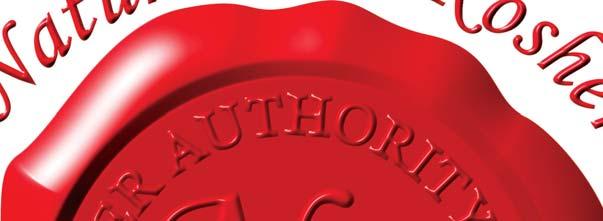
Rabbi Leizer Teitelbaum: A Cholov Yisroel cheese production begins with a mashgiach at the farm for the milking. AIF is always looking for new farms with more milking capacity to increase Cholov Yisroel production. Our mashgiach goes to each farm and supervises milking from the beginning to the end.Once the milking is complete, the mashgiach oversees how the milk is loaded onto a truck and seals the truck at all openings.
RMV: Our milk comes fromdairies that share our philosophy for the humane treatment of the herd, free pastures, and rBST-free milk (no growth hormones).We believe that great cheese starts with great milk.
RLT: The cheese facilities are not located on the farms, so trucks filled with Cholov Yisroel milk are sealed at the farm with a report of the driver’s name, quantity and lot number. The mashgiach’s report is emailed to the ~ right away, telling us that a Cholov Yisroel truck left the farm and headed to a plant. The trucks are unloaded within hours, so there is never a problem of kovush (absorption).
The facility that makes the bulk of AIF’s Cholov Yisroel cheeses isin California. This cheese plant has a silodedicated for AIF’s Cholov Yisroel milk. The mashgiach is always present at the cheese production facility during a kosher production. At the cheese plant, a mashgiach is there to receive the milk; he unseals the truck and then supervises the production of cheese.From the beginning of the process, including adding the cultures and enzymes so that the milk coagulates, our mashgichim are completely involved in the production.
The actual cheese production uses microbial (non-animal) rennet and is completed within a day. The cheeses are immediately sealed,
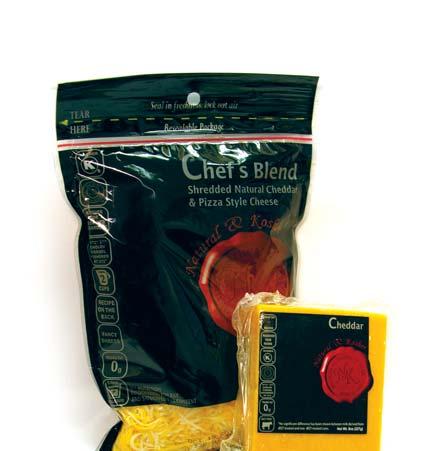
and then the aging process begins. When the cheese sets (after a certain aging period), the blocks are opened and cut at a separate facility and the mashgiach is there again to ensure that the cut and wrap, slicing and/or shredding is done according to kosher guidelines.
Rabbi Teitelbaum, what is it like working with AIF?
RLT: Moshe Vogel knows a lot about cheese, and is very into the technical details of cheese production and kashrus. Before becoming a manager, he actually worked as a mashgiach at AIF on behalf of the ~! It is very rare to have a cheese maker who really understands kashrus from the inside. How many of AIF’s cheeses are Cholov Yisroel?
RMV: Our Cholov Yisroel cheeses include Mozzarella, Muenster, Cheddar, Pepper Jack, American, Swiss, and Smoked Provolone. Both the Provolone and Pepper Jack cheeses are considered specialty cheeses. All of the Cholov Yisroel cheeses (with the exception of Pepper Jack) are kosher for Pesach. In addition, we are working on four more specialty cheeses, which should be available in the coming months.
Are any of AIF’s cheeses 6-hour cheeses?
RMV: Yes, our Swiss and Parmesan (coming soon) cheeses are both 6hour cheeses.
Rabbi Teitelbaum, how does the ~ implement kosher production at AIF facilities?
RLT: The Cholov Yisroel farms are located in Southern California. I personally set up the kashrus system with Rabbi Vogel. We have a team of over 15 mashgichim that work in
different aspects of the production— from milking, to the actual cheese production, to the cheese cutting. There is absolutely no “cutting corners” when it comes to the kashrus at AIF.
Rabbi Vogel, where did you learn so much about the art of cheese production?
RMV: I took courses at California Polytechnic State University to study the art of cheese making and earned a California pasteurizing license, as well. The mix of having someone with kashrus experience and an intimate knowledge of cheese production is unique to AIF!
Rabbi Vogel, how has it been working with the ~?
RMV: We have had no difficulties working with the ~. They have been very helpful—fantastic, actually. The rabbis at the ~ are knowledgeable and professional and always coming up with innovative and creative ideas to make sure production works smoothly. Where can consumers purchase AIF cheeses?
RMV: Our cheeses are available at supermarkets and kosher stores nationwide, as well as in Costco stores in Jewish areas. If consumers ask the manager of their local grocery store to carry our products, they will likely find a way to get them on the shelves. Have any other kosher inspectors come to AIF plants?
RMV: Other kosher giants have visited our facilities and were very impressed with the kashrus standards implemented by the ~ and have stated that they would give hashgocha without changing any of the kashrus protocol.
Rabbi Vogel, any final remarks?
RMV: AIF is passionate about cheese and passionate about kosher. We look for facilities and cheese makers who are passionate about the art of making cheese and strive to provide consumers with the best product and the highest kosher standards. ~
www.OK.org • 11
Kosher Spirit - Pesach 5770 3/9/2010 2:33 PM Page 11
MAROR











 By Rabbi Yitzchak Gornish
By Rabbi Yitzchak Gornish
with eating the Korbon Pesach, 4 it, too, must be completed before midnight5 and many authorities do not allow one to recite the brocha once midnight has passed.6


Mitzrayim.


Performing the mitzvah of maror provides us with a minor experience of our forefathers’ suffering during their many excruciating years of slavery in Egypt. While this commandment is clearly stated in the Torah, 1 in the post Beis HaMikdash period (and therefore no Korbon Pesach), it has unfortunately been reduced from a mitzvah d’oraisa to a mitzvah d’rabbonon 2 Nonetheless, as with all the mitzvos of the Seder night, women, too, are fully obligated to perform this mitzvah completely, as are men.3 Since the original mitzvah had to be performed in conjunction
The amount of maror one must consume should be equivalent to that of matzah, which is an amount approximately the size of an olive.7 Since many authorities believe that today’s olives have shrunken to a fraction of the size of those of yesteryear, one must eat much more than the volume of a contemporary olive to fulfill the requirement of eating matzah (a bit more than 28 grams/1 ounce). As today’s mitzvah of maror is a mitzvahd’rabbonon, a more lenient measure would suffice. However, one must be sure to consume slightly more than the minimum requirement to allow for the particles that
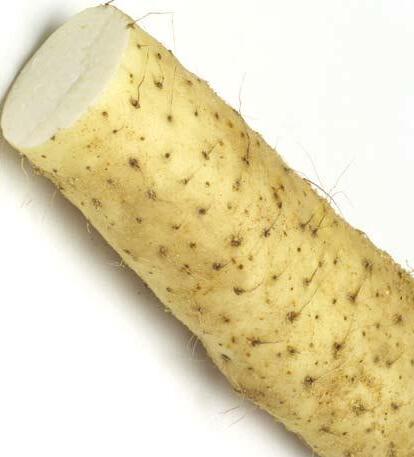
remain between the teeth and are therefore not swallowed.


There are five types of vegetation that are acceptable for maror 8 The order that they are listed in the Mishna is the preferred order of fulfillment (i.e. the first example is regarded as the best type of maror).9 It might surprise the reader that chazeres, which is commonly identified as Romaine lettuce, is listed first and thus one should seek out this herb for maror, even at a higher cost. One’s first reaction to this opinion is that Romaine lettuce is not bitter, so why is it preferred? One explanation is that although early in the season it is not bitter, as the season progresses the level of bitterness in this plant increases. The same analogy applies to our sojourn in Egypt. While we were originally invited as

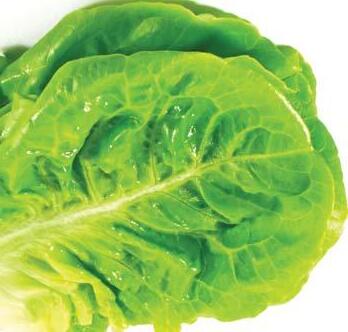


12• www.OK.org
Maror is second only to matzah as a food that expresses the essence of Yetzias
Kosher Spirit - Pesach 5770 3/9/2010 2:34 PM Page 12
royal guests, relatives of the viceroy, we were eventually demoted to slaves.10 Another explanation is that the Aramaic word for chazeres is chasa (mercy), recalling the mercy Hashem demonstrated during the Egyptian redemption.11






GREAT CHALLENGES












The great challenge of performing the mitzvah with chazeres is the multitude of insects infesting this herb. It is this fear that has many authorities looking at other sources of maror One should not attempt to clean and check Romaine lettuce unless one has experience in identifying and removing these insects, as their coloring and tiny size camouflage them within all the crevices of the lettuce leaves. (See ~ Vegetable Checking Guide.)
A recommended solution is to only consume the lettuce stalks, as they are easier to clean and check. However, today there are many brands of Romaine lettuce grown in conditions that protect them from insect infestation, sporting acceptable kosher supervision. As a result, it is possible to perform the mitzvah of maror using the most preferred herb. A more radical approach is to utilize a different species of lettuce, since chazeres is loosely identified only as “lettuce” according to many authorities. (Some actually consumed Iceberg lettuce as maror.)
Botanists have traced the origins of modern lettuce to a wild type aptly named “Egyptian lettuce,” since this early version
has been depicted in the tombs of Egyptian Pharaohs. The ancient Egyptians believed that this lettuce contained medicinal properties. It was extremely bitter and contained a white liquid in the leaves and stalks. The Romans were the first to cultivate lettuce into recognizable heads and it was only over many centuries of cultivation that the myriad lettuce types we know today were developed (based on climate, geography, etc.). It is quite probable that when
other lettuce varieties, consult your local Orthodox rabbi.)
Some authorities have identified the second listed herb as endives or chicory and there are those who have the custom to utilize this herb for maror
HORSERADISH



The most classic form of maror is listed third, the horseradish root. All of us recall the eye-watering, face-reddening experience of choking down this potent herb during the Seder. How is it that this apparently most bitter of herbs is not the favorite choice for maror?

Moshe Rabbeinu instructed the Jewish people to eat the Korbon Pesach with maror that it was this Egyptian lettuce that was utilized.
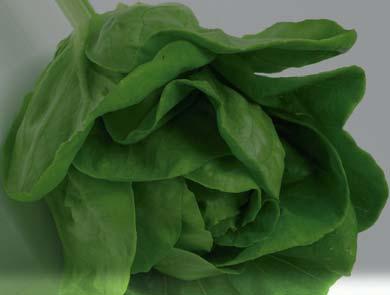
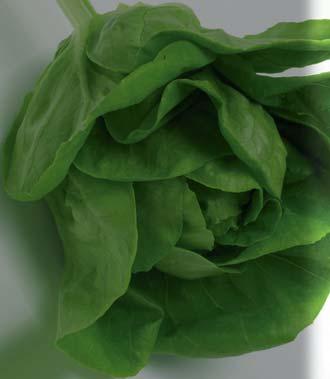



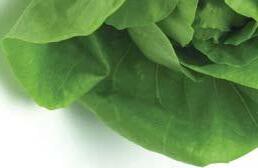
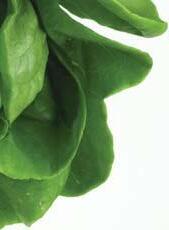

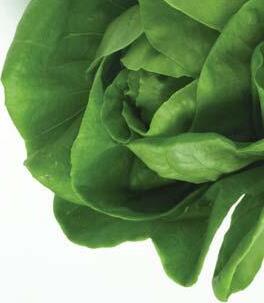
Possibly, when the Talmud discussed the need to neutralize the venom of maror (as discussed later), it was referring to the white sap contained in the Egyptian lettuce. According to botanical research, all lettuce is acceptable as maror since all varieties descend form the original Egyptian lettuce. (For a Halachic opinion on the use of
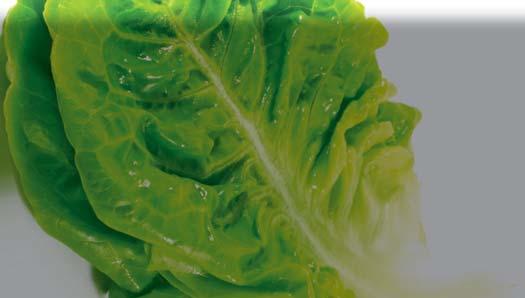
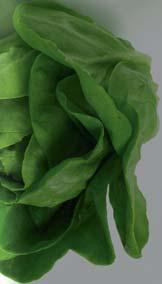







Here is where the distinction between sharpness and bitterness is important. While clearly horseradish is the sharpest choice, it is the bitter quality of maror (which actually means bitter) that we seek. The taste buds of the tongue are capable of only tasting four aspects: sweet, sour, bitter and salt. The myriad other aspects of taste are only detected in the nasal cavity. (When someone has a cold all foods taste alike except for the four characteristics detected by the taste buds.)
Hence, it is important not to confuse sharpness, which horseradish possesses in abundance, with bitterness, which it contains in lesser quantities. In fact, some authorities require grating the horseradish so as to weaken the sharpness so that the bitterness can be unmasked.12
There are those who follow the custom to partake of both the Romaine lettuce and the horseradish for the initial olivesized portion (Minhag Chabad,



www.OK.org • 13
Kosher Spirit - Pesach 5770 3/9/2010 2:34 PM Page 13
How is it that this apparently most bitter of herbs is not the favorite choice for maror?
Belz). However, all grating should be done Erev Pesach so as not to delay the Seder
SEVERAL THEORIES
There are several theories as to the identities of the last two bitter herb types, but nothing definitive. If one is stuck without any source of identified maror, they should utilize an herb grown from the ground, which contains sap and is not dark green.13 However, the brocha will not be recited for such a maror choice. Maror may not be dried out, or soaked in liquor for twenty-four hours, or preserved in vinegar.14 It goes without saying that prepared white ground horseradish commonly available throughout the year, while possibly kosher for Pesach, still cannot be utilized for the mitzvah of maror on account of the vinegar contained within.

Regarding Romaine lettuce (or endives) grown hydroponically, there is a dispute among Halachic authorities whether




The History of LETTUCE
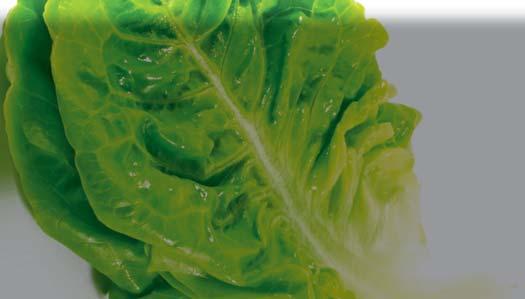
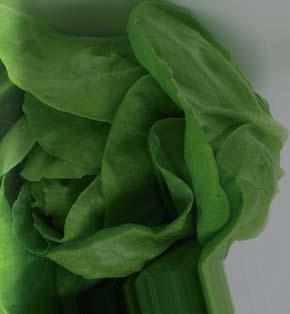




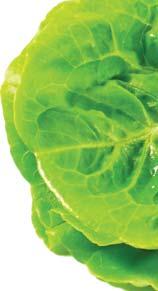
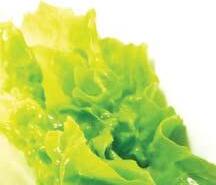

the brocha recited on such produce is Ha’Adama or She’hakol (since it isn’t actually grown in the earth [adama]).15


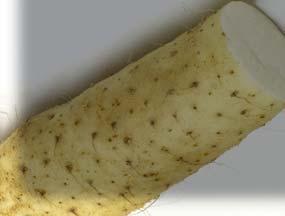
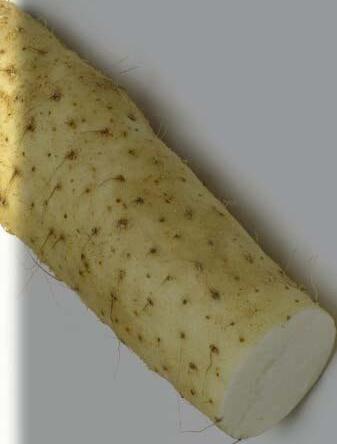











While there is no direct Halachic source requiring Ha’Adama on maror (in fact some authorities will allow a Ha’Etz substitute as a last resort), the fact that the brocha on the karpas exempts the one on maror indicates that maror should be a Ha’Adama





Another issue is that the Talmud compares matzah and maror to determine the characteristics of maror. One requirement is that both matzah and maror must be made from products that are purchasable with money for ma’aser sheini 16 This condition prohibits mushrooms, since they are not grown in the ground, so hydroponics might also fall under the category of not meeting ma’aser sheini qualifications, as well. Although hydroponic greens are less likely to be infested, since the growing requirements are so hygienic, nonetheless, these greens should not be used for maror



As mentioned, the Ha’Adama for maror is recited on the karpas while having in mind to also cover the maror. 17 Although there are several reasons for not reciting a separate brocha on the maror, the acceptable reason is that one is not eating maror with enjoyment in mind, rather one hopes to experience the unpleasantness. By extension of this concept, if one swallows the maror whole without chewing, the mitzvah obligation has not been fulfilled since the quantifier was bypassed.18 One should partake of maror directly after the matzah, since this is the order of the Torah verse.

DIPPING
Before consuming the maror, one dips it into charoses, which is reported to neutralize poisons contained in the maror 19 One wonders why the concern for this poison is limited to the Seder night, whereas all year long partaking of these herbs would not be cause for alarm. This question is even stronger because Seder night is known as the “night of the guardian,” when we are specially protected by Hashem. It is a time when we drink pairs, which is not normally done (2x2 cups which is dangerous according to the Talmud20); and we don’t complete
14• www.OK.org
PICTURES OF LETTUCE SHOW UP ON ANCIENT EGYPTIAN TOMBS
The Egyptians thought of lettuce as a f ertility medicine.
Kosher Spirit - Pesach 5770 3/9/2010 2:34 PM Page 14
Regarding Romaine lettuce grown hydroponically, there is a dispute among Halachic authorities whether the brocha recited on such produce is Ha’Adama or She’hakol...
Krias Shema after the Seder
There are several answers to the question regarding poisons, including that since the consumption during the Seder is for a mitzvah even unlikely concerns are addressed, so one will not hesitate to eat the proper amount. (An added reassurance to the commonly held view that one is not damaged when doing a mitzvah.)



In addition, the evil forces look to stop mitzvah performance and would use any opportunity, even a slight disposition in the herb to interrupt the mitzvah, so we use the charoses to ensure we will perform this mitzvah. One makes no brocha on the charoses since it is only being applied to another food and is in fact shaken off the maror before the mitzvah 21
AT THE SEDER
One should not linger over eating the maror and should be consumed as quickly as when eating the matzah. One obviously doesn’t recline when performing the mitzvah of maror. Ideally, one should utilize the maror on the Seder plate for the mitzvah, since this maror has been pointed to when reciting the Haggadah
Following the mitzvah of maror, maror and matzah are eaten together following the opinion of Hillel. As it isn’t clear
The wild lettuce Lactuca Scar iola or Serriola, also called Pr ickly Lettuce, is probably similar to what is believed to be the first wild lettuces.


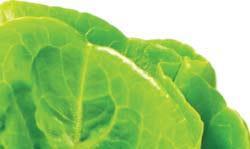
if Hillel’s opinion is dominant, one must eat maror by itself before satisfying the opinion of Hillel since according to the other rabbis, eating matzah with maror will result in the maror, which is only d’rabbonon, will interfere with the taste of the matzah, which is d’oraisa, and if one proceeds straight to korech without eating maror by itself, then according to the rabbis the
Before consuming the maror, one dips it into charoses, which is reported to neutralize poisons contained in the maror
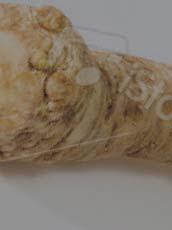




matzah whose obligation has already been satisfied, interferes with the maror which is still a d’rabbonon 22
However, if one only has enough matzah left for Afikomen, some say he should use it for korech since both the Afikomen and the maror have the status of d’rabbonon and do not nullify each other.23 Others say, however, that the last taste we should have in our mouth after the Seder is the Afikomen and now the maror will dilute that, so it is better to pass on the korech
Some authorities recommend switching the type of
maror utilized for korech from that of the original maror mitzvah. 24 It is the opinion of many that the maror utilized for korech does not need dipping in charoses, but many follow the custom of dipping anyway.25







May we merit what is spelled out in the last brocha of Maggid, that just as we were redeemed to have the mitzvos of matzah and maror (albeit d’rabbonon) on the Seder night, we should soon partake of the Pesach sacrifices in the Beis HaMikdash with the Ultimate Redemption.
1 Shemos 12:8 and Bamidbar 9:11.
2 Rambam, Hilchos Chometz U’Matzah, 7:12 and Maharil, Responsa, no. 158.


3 Shulchan Oruch, Orach Chaim 472:12.


4 Rambam, Hilchos Chometz U’Matzah, 7:12.
5 Minchas Chinuch, Mitzvah 6.
6 Mishnah Brurah, Siman 477, Seif Kuf-Vov


7 Mishnah Brurah, Siman 486, Seif Alef, Seif-Katan Alef
8 Mishna on Pesachim 2:6.
9 Shulchan Oruch, Orach Chaim, 473:5.
10 Shemos 1:14.
11 Rava on Gemara Pesachim 39a.
12 Sha’alos U’Teshuvos, Sho’el U’Maishiv, Volume 6, Siman Yud
13 Mishnah Brurah 473:46.
14 Shulchan Oruch 473:5.
15 Machazeh Eliyahu, Siman 28.
16 Gemara Pesachim 39a.
17 Mishnah Brurah 473:55.
18 Gemara Pesachim 115b.
19 Gemara Pesachim 116a.
20 Gemara Brochos 51b.
21 Shulchan Oruch HaRav, 475:11.
22 See Ran, Meiri & Milchamos Hashem on GemaraPesachim 115a.
23 Shailos U’Teshuvos HaGrash Eiger, Chelek Alef, Siman Chof
24 Haggadas Divrei Chaim, Hanhagos, Ois 16.
25 Rama, Shulchan Oruch, 475:1.






Lactuca sativa is the botanical name for common garden lettuce. The name is derived from the Latin word “lactis,” meaning milk, since a milky white sap is found in the stems and thicker veins of the lettuce plants.
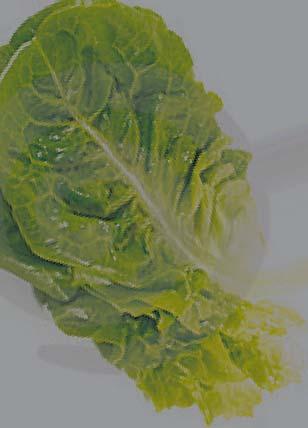



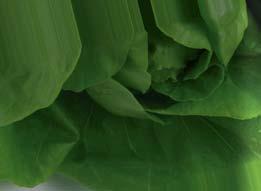
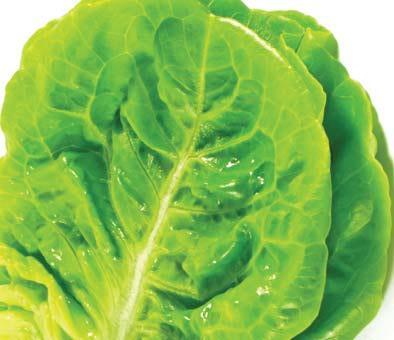


www.OK.org • 15
~
Kosher Spirit - Pesach 5770 3/9/2010 2:34 PM Page 15
LET ALL WHO ARE HUNGRY COME ANDEAT.”
By Aliza Libman
HOWTOCREATE A SHABBOS OR YOMTOVMENU THATWILLMAKE ALLYOUR GUESTS HAPPYYEARROUND
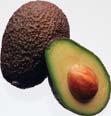

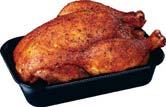
Second only to the terror of not having enough food for all your Shabbos guests is the prospect of serving your guests food they can’t—or won’t—eat. Though you may know your family’s food preferences inside and out, when you’re filling your table with guests, you add a layer of uncertainty that can be eased with careful planning.

Invite your guests with your menu in mind:
Don’t invite vegetarians if you’re planning a meal that has meat in every dish. If you’re committed to certain types of cuisine, then be sure to invite guests who will appreciate them.
Ask them what they avoid and prefer:
When your guests accept the invite, ask them about dietary restrictions. Make sure to ask about dislikes as well as allergies. Don’t just eliminate foods, though. Ask them what their favorite Pesach dishes
are, and then try to incorporate those foods into your menu.
Assume that they’ve left something out:
If you’re the kind of person who brings home guests from shul at the last minute, you need to expect the
home. Strive for enough variety to please everyone.
Balance your meal:

unexpected. Even if all your guests have assured you that they “eat anything,” don’t be cavalier in planning your menu. Some guests are reluctant to tell you about their dislikes or preferences. Others just don’t think about how much they hate olives (or tzimmes or fish) because they’d never make it at

Think of your meal as needing three essential components: proteins, carbohydrates and fats. Make sure to include at least one dish from each of these groups in your menu. Don’t repeat the same ingredient in too many dishes. If you don’t eat gebrokts, the carbohydrates might be difficult to vary, so make sure to have plain matzah on hand if your guests are sick of potatoes.
Vary your ingredients:
Making mushroom chicken alongside mushroom crepes might thrill your children, but what about a guest who doesn’t eat mushrooms? Limit controversial ingredients like broccoli
“ 16• www.OK.org
Kosher Spirit - Pesach 5770 3/9/2010 2:43 PM Page 16
Pesach preparations can be stressful, but planning to please all palates can eliminate some of the stress.
and spinach to one dish per meal. If you’re inviting families, consider the ages of your guests when planning and include kid-friendly food.
Don’t forget the dieters: Shabbos and Yom Tov can make it hard to stick to diet plans. Make sure that your menu includes healthy choices, such as lightly dressed vegetables and fruit options for dessert. Dieting guests will quietly thank you.
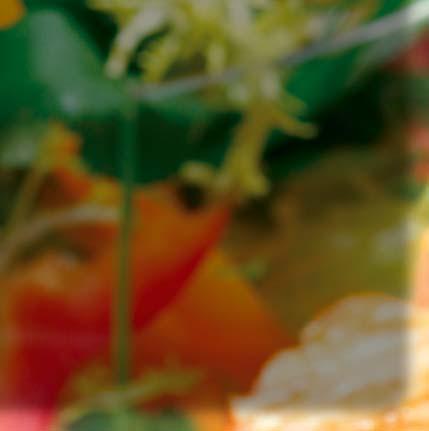
Make sure the menu works “minus one”: If each of your guests didn’t eat one item you serve, would they go home hungry? If the answer is yes, you need to diversify your menu.
Avoid cross-contamination: When preparing your meal, be careful when using high-allergen ingredients such as nuts and fish. Wash all your utensils and cutting boards and wipe down your counters thoroughly if you’ve used them.
Make things easy to separate:
If you know you’re hosting picky eaters, serve sauces and dressings on the side. Avoid “hiding” ingredients or chopping strong-flavored items too finely. Though food gurus will tell you to hide foods your kids don’t like in soups and purees, this could be a nasty surprise for your guests.
~ Kosher Spirit - Pesach 5770 3/9/2010 2:43 PM Page 17
Pesach preparations can be stressful, but planning to please all palates can eliminate some of the stress. You don’t need a staff of twelve to turn out a Yom Tov meal that satisfies even the pickiest of guests. Just design a menu that has something for everyone, and your guests will be sure to go home happy.
Pesach Recipe

Sweet and Sour Fish
3 pounds salmon, pike, carp, or whitefish

1/2 cup sugar (or sugar water)
juice of one lemon (3 tablespoons)


1 onion, diced
2 tablespoons wine
1 teaspoon salt
lemon slices (optional)
Clean fish, place in 4-quart pot, cover with boiling water and simmer until tender (10-15 minutes). Remove fish to deep platter or bowl. Retain 1 cup liquid from fish. Add remaining ingredients to liquid and simmer 10-15 minutes. Pour sauce over fish, chill. Serve cold, garnished with lemon slices.
Yield: 8 servings
A native of Toronto, Canada, Aliza Libman is a middle school teacher and freelance writer. She lives in Brookline, MA with her husband and is busy planning her next Shabbos meal. Aliza can be found online at alizalibman.blogspot.com. www.OK.org • 17
An Ounce of Prevention
By Rabbi Don Yoel Levy
An ounce of prevention is worth a pound of cure. Today, kashrus stories that attract the reader are those describing a sensational bust—how the writer or his agency caught a certified company violating kashrus rules. This shows the cleverness and greatness of the writer or kashrus agency and is quite interesting to read.
However, at the ~, we know that although it is important to be able to catch any wrongdoing on the part of a certified company, we accomplish much more if we set up a system that prevents such problems and ensures that everything runs smoothly. Through years of experience and hard work, supported by a devoted and conscientious staff, the ~ has invested much effort in the “ounce of prevention” theory.
Many companies produce both kosher and non-kosher products. In this situation, many hechsherim just monitor the kosher ingredients and products. By contrast, the ~ has developed an extensive database system which keeps track of all the kosher and non-kosher ingredients used by each company. This system alerts us to any compatible ingredients (i.e. a kosher ingredient that has a nonkosher counterpart, or vice versa), giving us a broader understanding of any potentially problematic situations. The ~ is the only kashrus agency that keeps this type of list and updates it on an ongoing basis.
The ~ also has a unique formula system, which provides complete accountability and transparency for all ingredients used in our database. Each certified company must provide a formula (recipe) for every kosher certified product in its facilities. With this information, the ~ can then be sure of every ingredient that enters a product, and ensure that each ingredient is compatible with the product’s kosher status (pareve, dairy, or meat). This is required of all ~ certified companies, even those with all-kosher facilities.
Two years ago, the son-in-law of

18• www.OK.org Kosher Spirit - Pesach 5770 3/9/2010 2:34 PM Page 18
…
a director of a major kashrus agency called me at home with a problem. It was ErevPesach and there was a product he had thought was ~-P, but it was actually not certified for Passover. I was able to help him solve the issue within fifteen minutes thanks to our kashrus database featuring the latest computer technology.

In 2009, when the Peanut Corporation of America issued a recall of their products due to contamination, the ~ was able to determine exactly which of our certified companies were using the recalled products, and in which products they were being used. (Editor’s Note: See Kosher Spirit Spring 2009, page 27.) Thus, our extensive database is crucial not only for the maintenance of a high kashrus standard, but can also play a valuable role in protecting the health and safety of kosher consumers when a recall is initiated.
The ~ is working intensively on implementing another preventive measure to ensure that only approved ingredients are used in certified products—the Receiving System. Most kashrus organizations monitor ingredients by simply giving a certified company an approved list and instructing the company to only use the ingredients found on the list. If the mashgiach finds that the company has purchased an ingredient that is not on the approved list, he tells the company to remove the product. This is basically an “after the fact” system—one waits to find something wrong and then has to
correct it. This could result in relying on heterim, or even a recall if the ingredient does not meet the proper kashrus standards and has already been used in kosher production. A recall can be very expensive and companies are obviously reluctant to go through this process. Even when a recall is done we cannot be 100% sure that it is complete, and no product is left anywhere on the market. Consequently we would rather expend greater effort to prevent the situation from happening in the first place.
The Receiving System developed by the ~ allows us to be proactive in ensuring an additional safety step that only approved ingredients will go into certified products. Certified companies are required to implement this system. The first step in this system is for the R&D (Research and Development), Quality Control, or the ordering department to institute an internal policy that all ingredients must be approved by the ~ before they are purchased. Kosher thus becomes another standard that Quality Control must check for (just like taste, color, price, etc.), and is integrated into the company system.
Once this system is in place, the purchasing department is instructed to add kosher compliance to their contract with their vendors. If an incorrect, unapproved ingredient comes in, or the ingredient arrives without the proper kosher markings, the vendor is responsible to remove and replace the ingredient. Companies obtain ingredients either in package form (bags, boxes or large containers), or in bulk shipments (in trucks, tankers, etc). Packaged products will carry either a printed kashrus symbol on the label, a hand stamp, or sometimes a written mashgiach’s signature—as required by
the agency certifying the product. Products such as oil or other liquids may come in a tanker, requiring special documentation that attests to the kosher status of the tanker.
The ~ also requires that someone in the receiving area at each facility be responsible to monitor that all incoming ingredients are properly labeled, have proper kosher symbols and that all bulk transport meets the kosher requirements. Furthermore, a list of all received ingredients must be recorded either manually or electronically for the mashgiach to review during his inspection.
At one of the biggest flavor houses in the United States, which is certified kosher by the ~, two mashgichim are present in the facility every day. Due to the complexity of the company and the vast amount of ingredients required for flavor production, Rabbi Favish Moster, one of our most prominent mashgichim, has set up a special computer program that assists in monitoring the raw materials (kosher and non-kosher) that enter the facility. This company uses some 8,000 different ingredients to produce more than 95,000 flavors…Definitely more information than can be recorded by hand! Rabbi Moster’s system helps guarantee that mistakes will not happen.
At the ~, we much prefer to set up systems that prevent kashrus mishaps, so we can write articles about our kashrus innovations. In the Pesach season, when Jews are known to be extra careful with kashrus, it is my hope that others will take note of our methods and implement preventative measures to protect the integrity of kosher certified products and the consumers that rely on kosher symbols. May our diligence in this matter, and in all matters of Torah and mitzvos, bring about the Geulah immediately and may we celebrate our Pesach Sedarim with Moshiach in Yerushalayim. ~
www.OK.org • 19 Kosher Spirit - Pesach 5770 3/9/2010 2:34 PM Page 19
The Receiving System developed by the ~ allows us to be proactive in ensuring that only approved ingredients will go into certified products.
MEET OUR STAFF:
BEHIND
WHO’S BEHIND THE ~

Interview with Rabbi Aharon Haskel
Head of ~ Israel
KS: Where did you grow up? Where did you go to yeshiva?
RAH: I was born in Petach Tikva, Israel and grew up in Bnei Brak, Israel. I went to Knesset Beit Yisrael Yeshiva, first in Haifa and later in Yerushalayim. After my marriage I studied for rabbinic ordination in Beit Midrash Gavoah Beit David in Holon, where I received my semicha at age 28.
KS: What did you do after yeshiva?


RAH: I married my wife Miriam in 1988. After my years of learning in yeshiva, kollel and the Beit Midrash, I got involved in the kosher industry when I was appointed to manage the Passover department at the Holon local rabbinate, and was later promoted to manage the entire kosher department.
KS: What is your current position at the ~?




RAH: I head the Israeli branch of ~ Kosher Certification. The Israeli office gives kosher certification both to Israeli companies and to international companies seeking to import their products to Israel. We also work with Middle Eastern and Eastern European companies. Additionally, we are responsible for the China and India branches.
KS: What prepared you the most for your current position at the ~?
RAH: As I mentioned previously, I used to work for the Holon Rabbinate kosher department, which was headed by Rabbi N. Landman. Holon has the largest industry zone in Israel and by working there I got acquainted with many different kinds of food plants, learning a lot about ingredients used in the food industry as well as about production processes. For years I studied with different experts in food technologies in various areas (dairy, poultry,
Rabbi Aharon Haskel

etc.) in order to broaden my knowledge of the food industry. Later I served as a kosher consultant for different kosher agencies. Then, 11 years ago, I joined the ~ when Rabbi Levy, wishing to establish an ~ 'outpost' in Israel, asked me to help him create the new office. With his constant support and involvement, ~ Israel has become a kosher agency recognized and respected by all kosher authorities and organizations in Israel.
KS: What is best thing about working at the ~?



RAH: The best thing is the ~ internationality — the way we have representatives all over the world really illustrates the meaning of the expression 'global village'. It is a huge plus for our customers, since it means that anywhere, anytime, they have access to information and kosher services. Also, our office works from 8:00 AM to 8:00 PM to suit all time zones. The global village phenomenon gives us unprecedented control over kosher matters all over the world.
KS: How would you describe the ~ today?


RAH: I think that, today, food companies interested in kosher certification have mostly realized that there is a difference between a kosher certificate you can acquire anywhere and the umbrella of services provided by the ~, which owns a huge ingredients database, suggests alternatives for non-approved raw materials, finds technological solutions to make kosher productions possible…these are just not services you can obtain everywhere, and that’s why food giants — in Israel and all over the world — apply to the ~ in order to be kosher

~
20• www.OK.org Kosher Spirit - Pesach 5770 3/9/2010 2:34 PM Page 20
certified. Because kosher certification is typically viewed as a burden, it has been an enormous success for us to turn it into such a positive and enlightening experience for our customers. What we succeeded in doing is showing our customers that our high and strict standards do not apply only to kosher matters — this is the way we work, and our standards are high in every aspect of the cooperation between us and our companies.
KS: Can you share an interesting experience that you had while working at the ~?
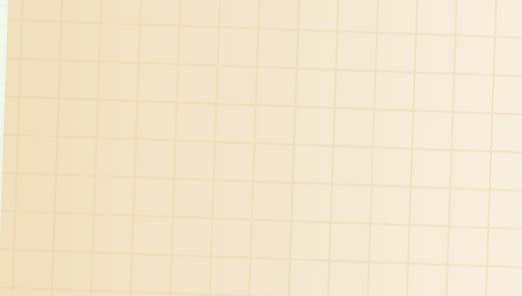






RAH: There were certainly quite a few. One of my favorite stories actually happened when ~ Israel was just starting out. I was in the Far East to supervise a kosher mushroom production for one of the biggest food chains in Israel. The plant was supposed to produce 21 containers, but the work seemed to be proceeding extremely slowly, which raised my suspicions. One night, I suggested to my fellow mashgiach that we would pay a surprise visit to the facility. When we arrived we couldn't help noticing a very unpleasant smell. Following our noses, we found ourselves at the facility yard, where 800 workers were busy emptying out old, expired cans of mushrooms into a large vat, where some chemicals were added to the mushrooms to disguise their source. They were packed into cans, which were marked as a part of the kosher batch we had just finished producing…needless to say, the kosher production was cancelled then and there and we left immediately for the nearest airport. The Israeli company sent me a bouquet of flowers when I returned to Israel, thanking me for saving them from a public scandal which was sure to follow if the mushrooms – verified in a lab test to be inedible by humans and therefore dangerous to health – were sold in their stores. To this day I still hear from people who met the owner of the chain who persists in telling people that I saved his business… ~
“ What Other People Say About Rabbi Aharon Haskel

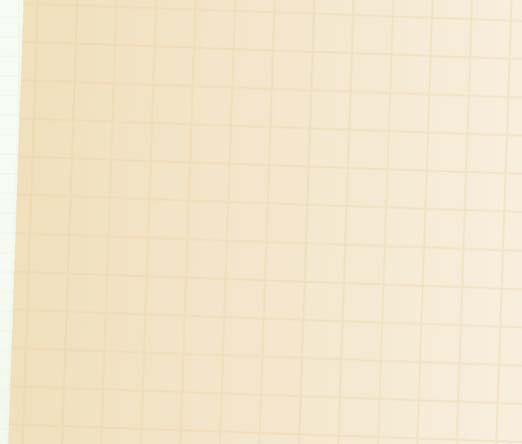



Yosef was thirty years old when he stood before Pharaoh. He was given the title “Avreich” which means Av bechochmo verach beshonim (a father in wisdom and youthful in years). Reb Aharon brings youthful vigor and experience beyond his years to the ~. Almost a dozen years ago, he took the helm of ~ Israel and built it up to one of the largest and most respected kashrus agencies in the Holy Land. Rabbi Haskel’s accomplishments are not only quantitative but also qualitative. He transformed ~ Israel’s certification procedures to an extremely efficient and updated ~ system. Reb Aharon’s certification system is held in high esteem by all of the Israeli kosher certifications. In addition, he runs an extremely tight ship and yet the enthusiasm in his office is second to none.
Rabbi Don Yoel Levy, Kashrus Administrator, ~ Kosher Certification
Working with Rabbi Aharon Haskel for the past several years has given me the opportunity to work with a person who is very personable and extremely knowledgeable in the field of kashrus. His personal involvement with every detail and his enthusiastic personality have made him invaluable to the world of kashrus. May he continue to have much success in the wonderful work he does.
Rabbi Shimon Lasker, Rabbinic Coordinator, ~ Europe

Allowme to convey my thoughts about my trustworthy, esteemed friend, Rabbi Aharon Haskel…There are really no words to describe his dedication to kashrus and to all halachos and minhagim to the highest level, mehadrin min hamehadrin. His kindness, disposition and helpfulness are admired by all. May he go from strength to strength and continue expanding the borders of holiness and purity.
HaRav M. Weissmandl, shlit”a Rav of Nitra, Monsey
“
www.OK.org • 21
“Rabbi Haskel has gained the respect of major kashrus organizations worldwide through hard work and devotion...”
Kosher Spirit - Pesach 5770 3/9/2010 2:34 PM Page 21
– Rabbi Dovid Steigman, Rabbinic Coordinator, ~ Kosher Certification
ItWould Have Been Enough

uring the we recite a series of passages commonly referred to as “Dayenu.” The passages begin with the declaration: “How many are the Good Things that the Almighty has showered upon us!” and continues to enumerate 14 kindnesses that Hashem showed the Jewish people. At the end of each declaration, we say, “Dayenu – It would have been enough!”
The Previous Lubavitcher Rebbe, Rabbi Yosef Yitzchak Schneerson, used to stop often during the recital of the Haggadah at his Pesach Seder in order to offer explanations on the different passages, and especially to share Chassidic insights. When he came to the “Dayenu,” the Previous Rebbe made a point to read through the entire section without stopping. He elaborated on the passages either before beginning “How many are the Good Things…” or after finishing all 14 kindnesses.
What was the Previous Rebbe trying to show by not interrupting the “Dayenu” with explanations?

The Baal Shem Tov often shared a story that can lead us to an answer for our question.
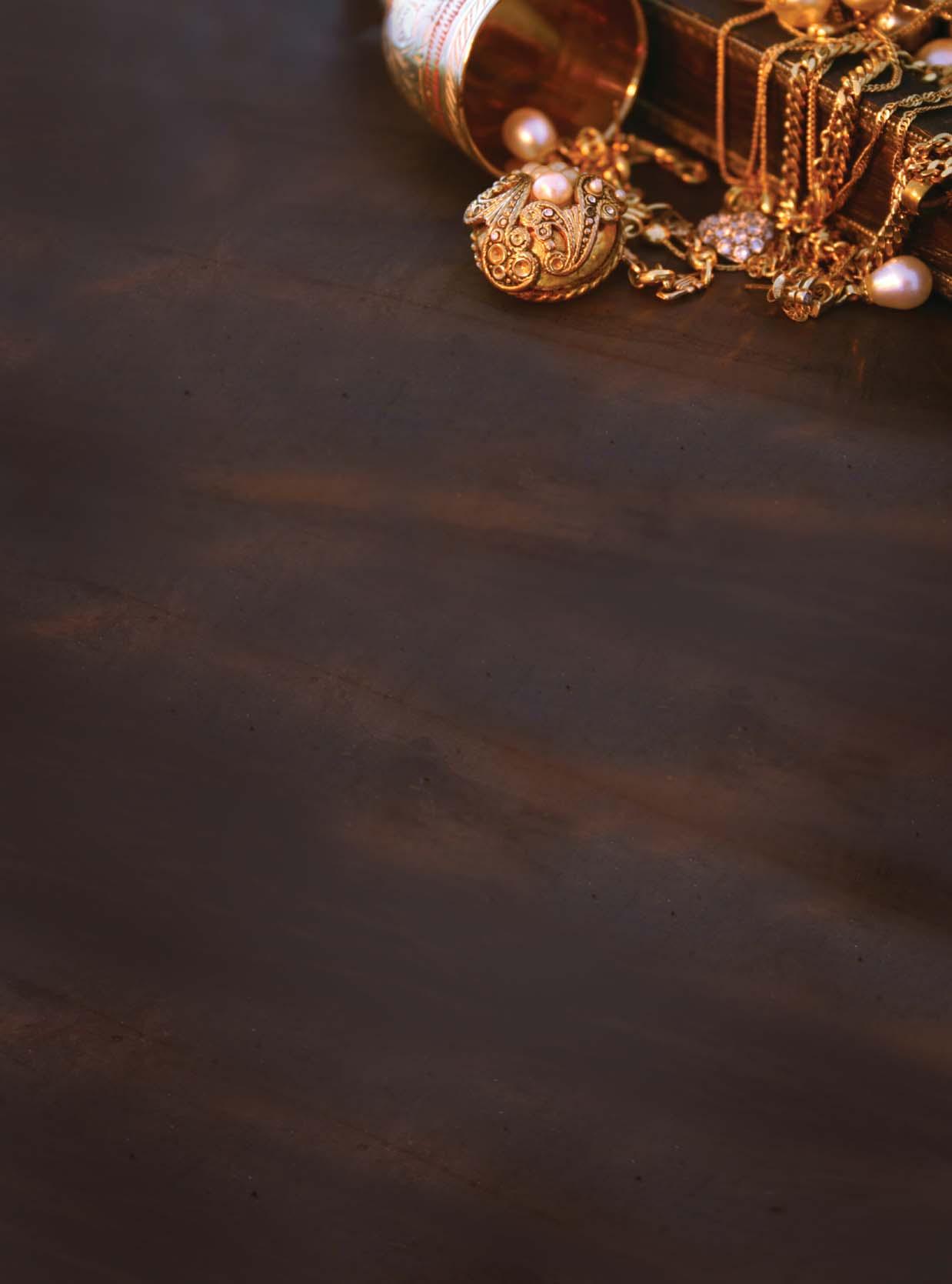
“There was a King who possessed a beautiful palace that had many chambers, one within the other. Numerous guards prevented people from entering or leaving without the King’s permission.”
“Among those who desired to enter the King’s inner chamber, there were different types of people. One group, of the lower-classes, were immediately terrified by the King’s guards and fled from them. They are not the ones whom G-d desires.”

“A second group did not fear the outer guards, because they had schemed to bribe the guards with money – like those who give a coin to charity before prayer. They get past the guards, but something else holds them back from reaching the inner chamber and seeing the King’s face. When they enter the palace and see the King’s private collections…they get such pleasure from feasting their eyes that they lose themselves there, forfeiting the great opportunity to see the King himself, in all his glory.”
A second group did not fear the outer guards, because they had schemed to bribe the guards with money—like those who give a coin to charity before prayer.
“The most outstanding group was not concerned with their own pleasures, and desired only to see the King in his inner chamber. So even when their eyes feasted on all the magnificent things…it was totally insignificant to them in the face of their will and desire to see the glory of the King himself.” 1
Often, we get stuck on a certain level of Torah observance, like the second group in the Baal Shem Tov’s story, and do not bring the idea of a

full connection with Hashem to fruition. At some point, we say, “Dayenu! This is enough for me! I’ve come a long way; I’ve overcome so many hurdles…to reach where I am today. I have truly “left Egypt” in the sense that spirituality is meaningful for me in everyday life. But I already have enough…inspiration from my Judaism, so I’m reluctant [to seek]…a higher level…”
This reaction is a very natural one, for all of us have natural limitations and growth spurts (physical or spiritual) that can be very tiring! But, the Baal Shem Tov teaches that even when we feel we are at our limit, we can dig a little deeper into ourselves and find the strength and courage to take the next step.
By reciting the full “ Dayenu ” without interruption, the Previous Rebbe was telling us not to stop, even when we feel like screaming “Dayenu” and taking a break from spiritual growth. Even when we are content with where we are holding, we can always reach higher because Hashem created us to always desire to be closer to Him.
This year, as we recite the “Dayenu” at our Pesach Sedarim, may each of us tap into our inner strength and fight the urge to say “Dayenu” in our own journey of growth and attachment to Hashem. In the merit of our renewed energy and commitment to reaching higher, may Hashem respond with the ultimate “Good Thing,” the final Redemption and the reunification of all Jews with Hashem through the immediate coming of Moshiach.

CHASSIDIC
INSIGHTS
DAYENU:
Compiled by Dina Fraenkel
Dur
, “ A m o n g t h o s e w h o d
ing the Pesach Seder
22• www.OK.org Kosher Spirit - Pesach 5770 3/9/2010 2:34 PM Page 22
1 Ohr ha-Meir, Parshas Vayishlach
Soul Nutrition
Kar pas
According to Kabbalah, tibul (dipping) is symbolic of bitul (negation of the self) and both words are made up of the same Hebrew letters. The purpose of dipping one food into another is so that the first food will surrender some of its own taste and “give way” to a more desirable quality found in the flavoring agent.

Ironically, while dipping food suggests surrender for the food, it bears the opposite connotation for the dipper himself! A person usually dips his food into a flavoring agent because he desires a better eating experience.
However, on Pesach, our dipping experience is totally different. Instead of being an expression of culinary expertise, we dip ourselves and emulate the karpas, trying to have our own genuine bitul to Hashem, just as the karpas has bitul to the salt water.
Every day we have a mitzvah to mention Yetzias Mitzraim, so how do we fulfill this mitzvah differently on Pesach?
On a regular day, we just recite the pshat (simple meaning) but on Pesach we have a Seder to tell us that we need more than just pshat – tonight we need a seder (רדס). Samech is for sod, Daled is for derush, and Reish is for remez
[Sod, derush, and remez were all given to Moshe Rabbeinu, along with the simple pshat, which is why PARDAS (סדרפ) im HaCollel is the same numerical value as “Moshe” (השמ).]
Kosher by the Numbers
45,052 actual miles flown during 14 flights over 17 days on Rabbi Krinsky’s most recent kosher inspection trip
“
99.28% of more than 8000 original subscribers continue to receive the ~’s QuickKosher business electronic newsletter
9,030 number of hits online at the TorahCafe.com Kosher Corner video series as of 3.1.10
39,064 number of cell phone minutes used by ~ staff in the month of January 2010





35 average number of consumer kosher questions answered each day at the ~
Jews make up 0.2% of the world population, but 54% of the world chess champions, 27% of the Nobel physics laureates and 31% of the medicine laureates.

Jews make up 2% of the U.S. population, but 21% of the Ivy League student bodies, 26% of the Kennedy Center honorees, 37% of the Academy Award-winning directors, 38% of those on a recent Business Week list of leading philanthropists, and 51% of the Pulitzer Prize winners for nonfiction.
Israel has more high-tech startups per capita than any other nation on earth, by far. It leads the world in civilian research-anddevelopment spending per capita. It ranks second behind the U.S. in the number of companies listed on the NASDAQ.
Between 1980 and 2000, Egyptians registered 77 patents in the U.S., Saudis registered 171, and Israelis registered 7,652


After the recent earthquake in Haiti, even though only 8 Israelis were known to be in Haiti during the quake, Israel set up the biggest field hospital in Port-Au-Prince, able to treat 500 patients per day.
Mi k’amcha Yisroel!
ונתרחבהתא Atah v’chartonu mikol ha’amim…v’romamtanu mikol ha’l’shonos… You chose us from all the nations… You elevated us…”
www.OK.org • 23 SOUL NUTRITION îé ëòîê éùøàì!
Kosher Spirit - Pesach 5770 3/9/2010 2:35 PM Page 23



Kosher Without Compromise. KOSHER CERTIFICATION ~ Kosher Spirit, 391 Troy Ave., Brooklyn, NY 11213 718-756-7500 • info@ok.org • www.ok.org Kosher Spirit - Pesach 5770 3/9/2010 2:35 PM Page 24










































 By Rabbi Zushe Yosef Blech
By Rabbi Zushe Yosef Blech


















 By Rabbi Yitzchak Gornish
By Rabbi Yitzchak Gornish












































































































































































